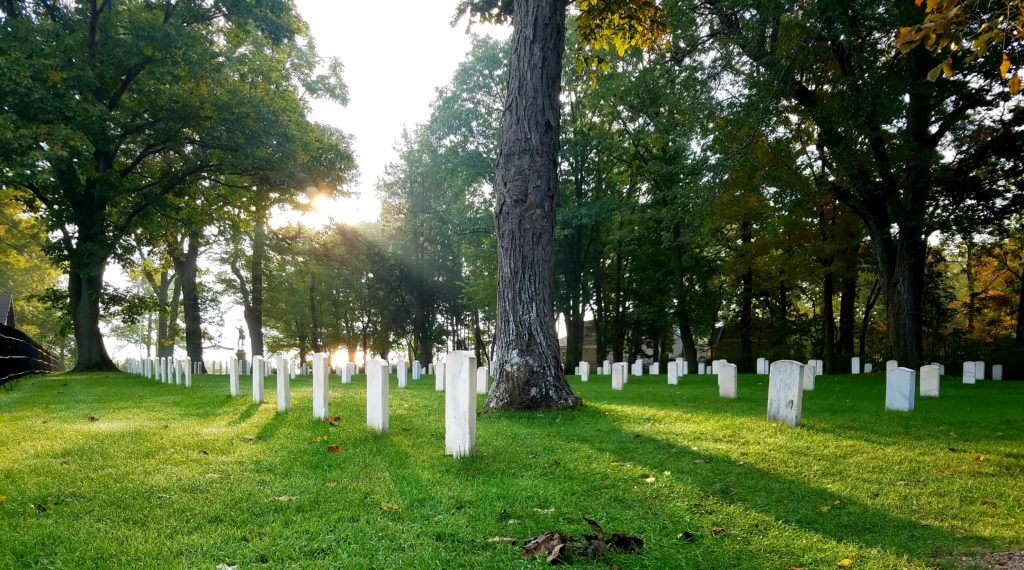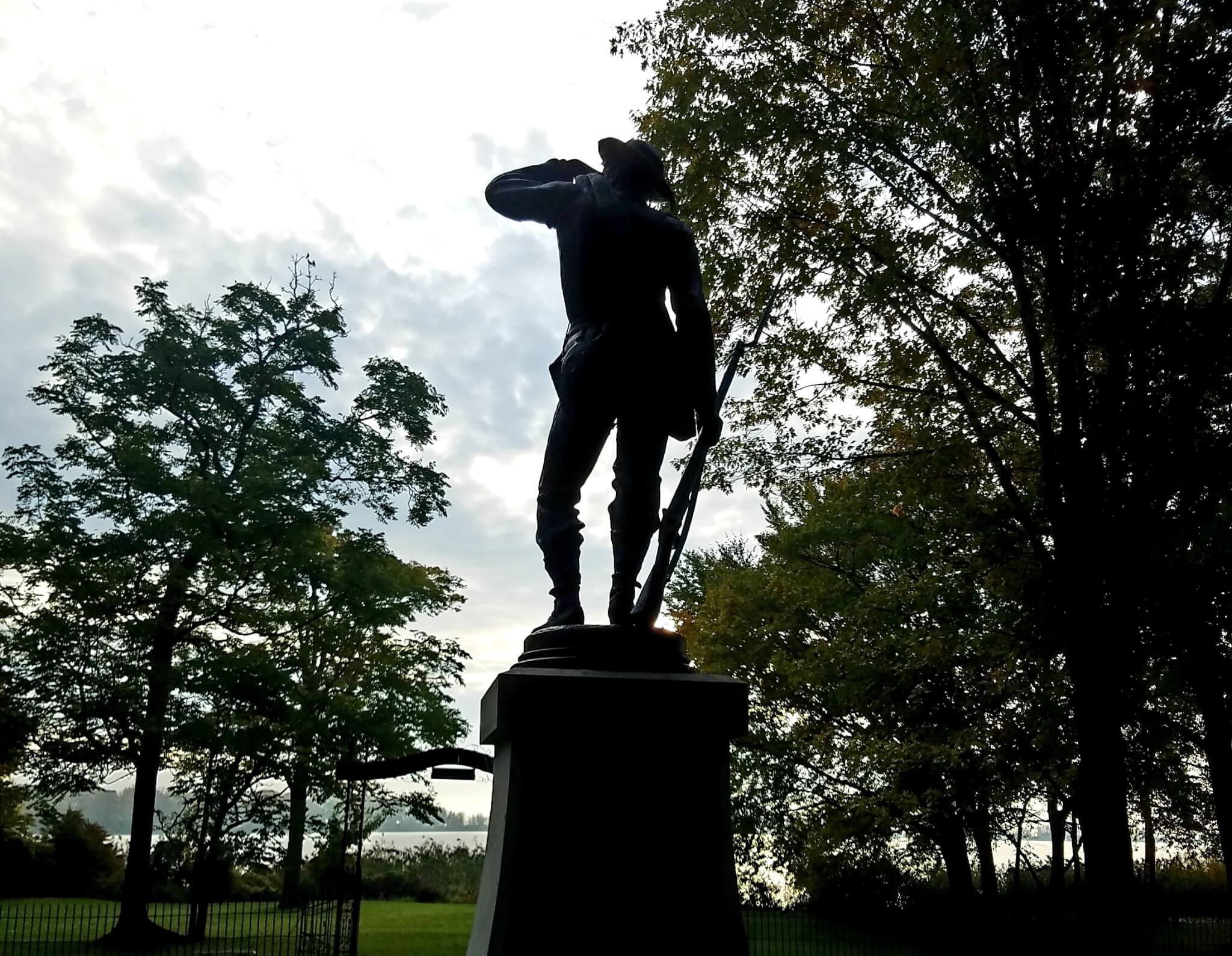In 1862, Johnson’s Island was a stockade with 15-foot high fences, accessible only by boat. The 300-acre limestone island in the middle of the Sandusky Bay housed hundreds of confederate prisoners of war.
When I followed the route to get there, I came to a long, narrow land bridge guarded by a gate.
A pickup truck pulled through the gate and I rolled my window down.
“How much does it cost to get through?” I asked.
The driver smiled and gave me a four-digit code.
“Punch that in,” he said. “I saved you two bucks.”
I thanked him, dialed in the code and drove through the open gate onto the bridge.
The island is now effectively a neighborhood of high-end homes overlooking the bay. Most of the homes, I noticed, are built facing the water instead the road. Almost everyone seemed to own a boat.
But along the shore is a cemetery marking 206 confederate soldier graves – a sobering reminder of a time our country was more divided than it has ever been.
“The union prison guards just buried the confederates without graves initially.”
A man from a neighboring house had observed me walking the cemetery and joined me.
“Then, the confederates starting burying their own and constructing carefully made crosses with names carved in them,” he said. “That’s how so many graves were able to be identified.
Tame deer wandered curiously around the cemetery and walked right up to me at times. The sun was still rising in the sky just beyond the bay.
I had never realized that Ohio had so many islands, nor that one of them had ever been a POW camp accessible only by ferry.
But, I thought as I walked out of the cemetery in the morning light, I was learning quite a lot this trip.
